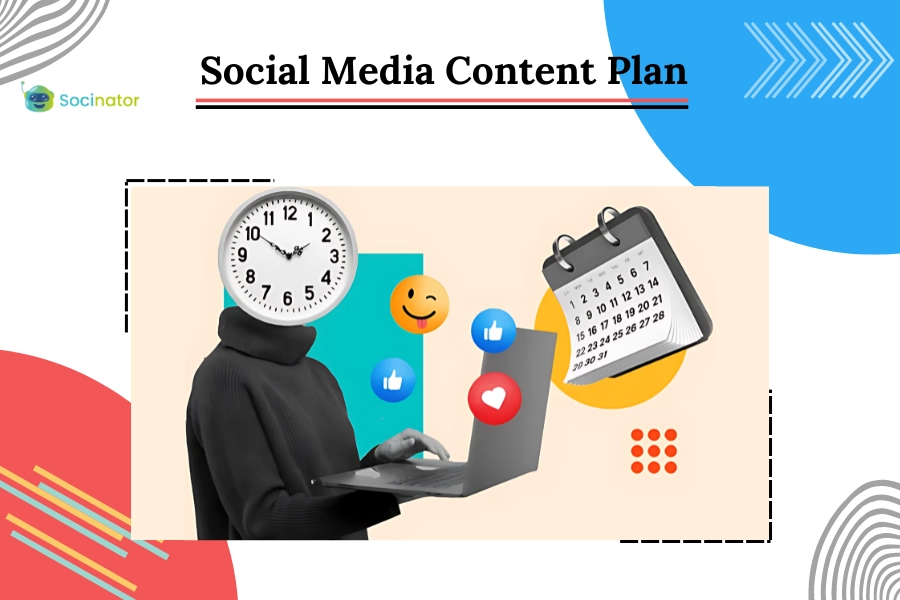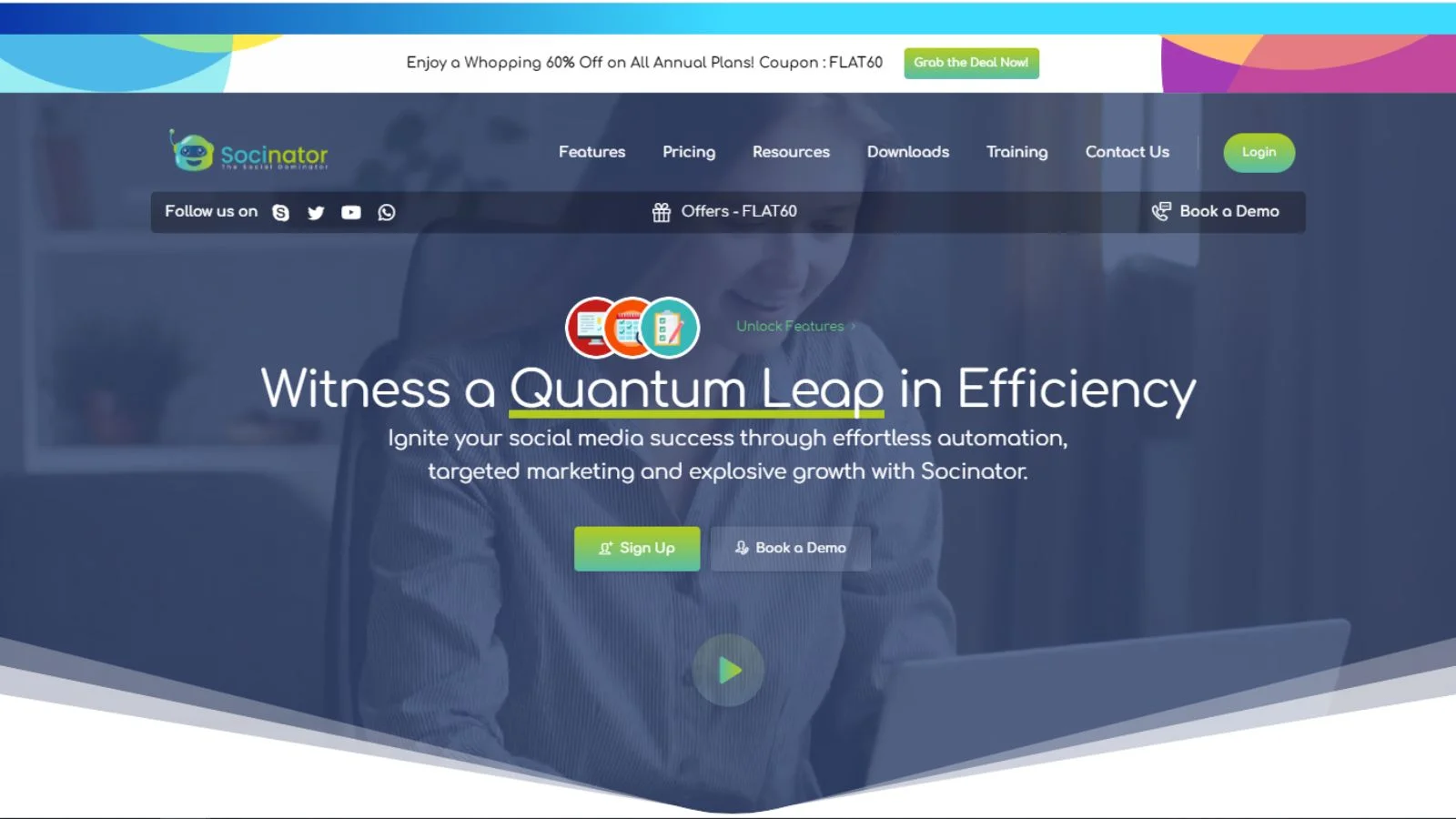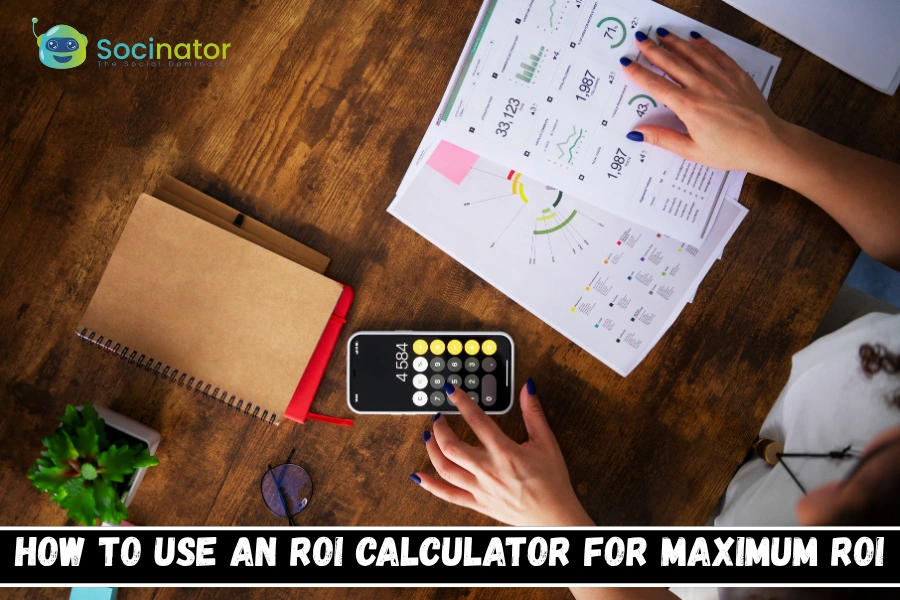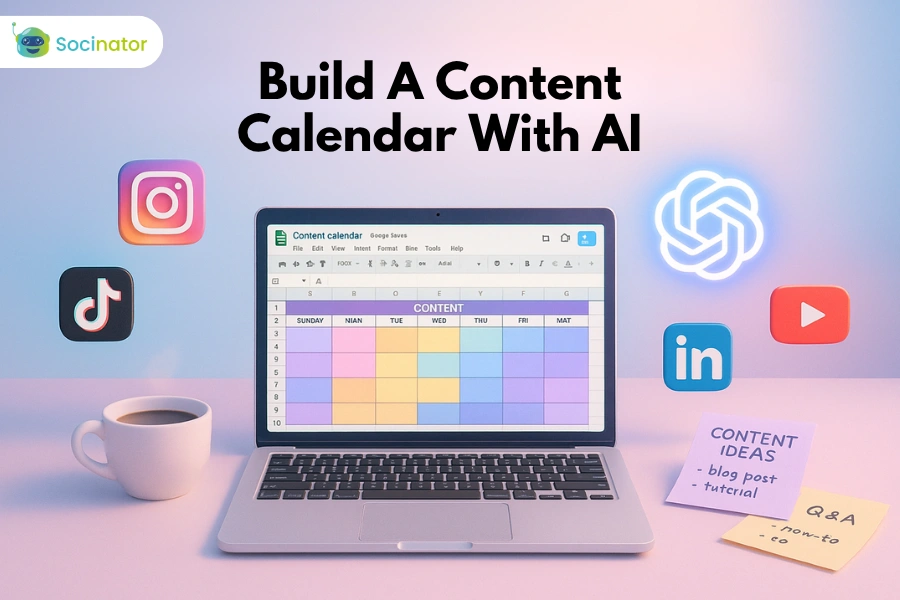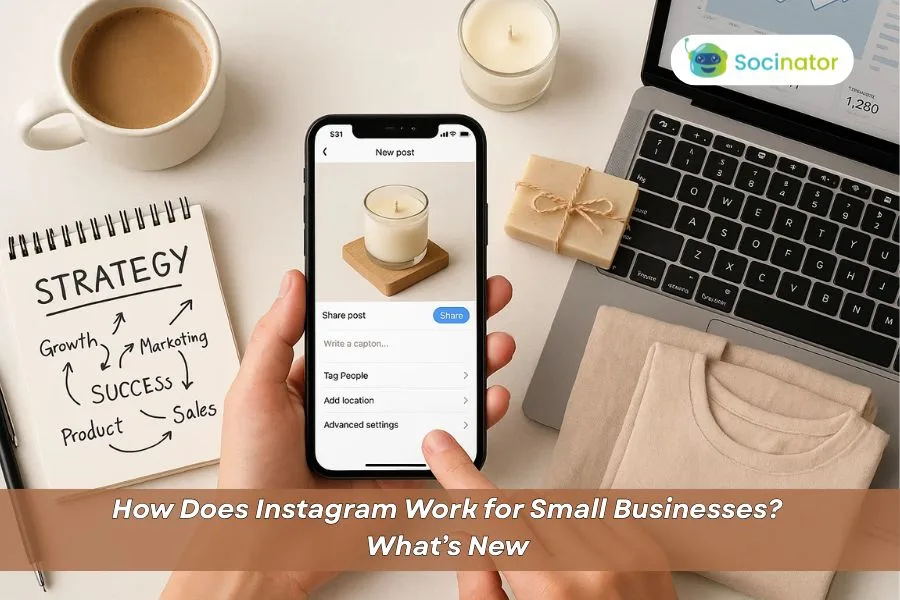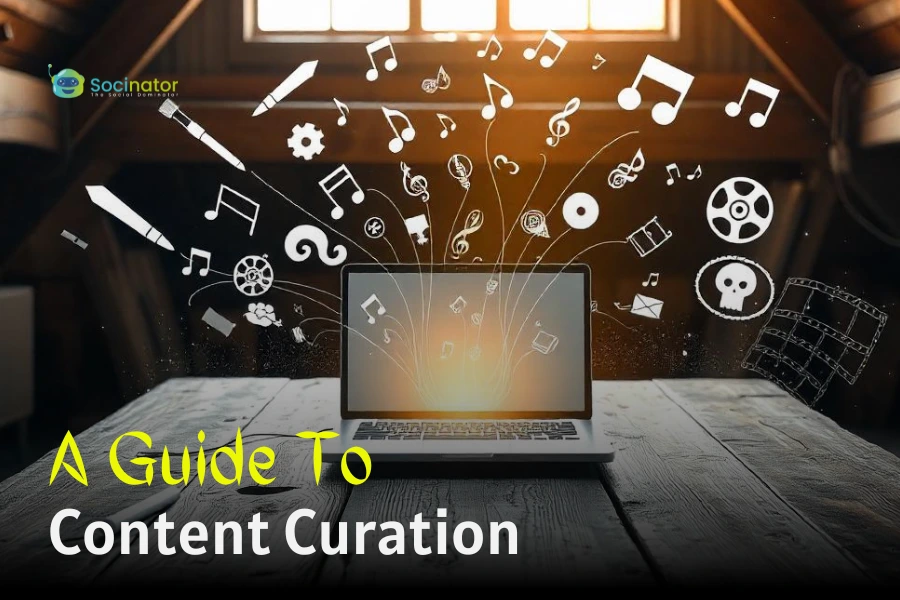Crafting a social media content plan is like drawing the blueprint for your brand’s online success. Your social efforts can quickly become scattered and ineffective, leaving you lost in the digital noise without a clear plan. A well-structured content plan helps you stay organized and ensures that every post, story, and tweet aligns with your broader business goals.
Whether you have aimed to boost engagement, drive traffic, or build brand awareness, a solid content plan is your roadmap.
In this blog, you will discover all about content planning for social media. Ready to turn your social media strategy into a powerful growth engine?
Let’s dive into creating a content plan that truly works.
In a hurry? Listen to the blog instead!
What Is Social Media Content Planning?
A social media content plan is the strategic process of organizing and scheduling your posts. It’s about determining what content to share and when to share it to meet objectives such as boosting visibility, engagement, or brand awareness.
A well-crafted social media content scheme involves:
- Batch Creation: Producing content in batches to streamline efficiency.
- Cross-Platform Strategy: Integrating content into a cohesive campaign template and repurposing it across various channels for broader reach.
- Goal Alignment: Ensuring that each post aligns with specific marketing objectives.
- Content Balance: Mixing your original content with curated materials to maintain a dynamic and engaging presence.
Why Is Content Planning Essential?
Now that we’ve understood the social media content plan, let’s explore why having one is crucial. Think of it as a gift to your future self a bit of foresight and organization now will make things much smoother.
Here are some key benefits of crafting your content plan:
Staying Organized
Batch-creating content is far more efficient than scrambling for posts daily or for specific campaigns. You streamline your workflow when you produce multiple pieces of content simultaneously. Plus, you can repurpose content effectively. For instance, you could:
- Write a script for an Instagram Reel.
- Derive a text caption from that script for platforms like X (Twitter).
- Design an image or infographic based on the Reel content.
- Save your video in various formats for other platforms like YouTube, and Facebook Pages, keeping in mind the recommended post sizes.
Social media content planning allows you to maximize the value of each piece you create. Consider turning one post into several variations, from articles to short posts highlighting key takeaways.
Reducing Last-Minute Stress
A solid content plan helps you avoid the pressure of last-minute content creation and writer’s block. With a plan, you can prepare for relevant holidays or industry-specific dates, like National Puppy Day. Using tools such as the EssayPro plagiarism checker can also keep your workflow clean and trustworthy as you scale your ideas. Social media planning also provides time for creativity and collaboration and prevents burnout, fostering a positive work environment where employees become brand advocates.
Moreover, being prepared for the month ahead gives you the flexibility to address trending topics spontaneously as they emerge in the news cycle.
Aligning with Marketing Goals
A social media content plan ensures your social media efforts align with your broader marketing strategy. It bridges the gap between your strategic goals and daily marketing activities. While individual posts might seem insignificant, collectively, they drive your social media strategy toward success or failure.
You can ensure that all your posts contribute to a unified plan by integrating your content planning tools with your overall marketing goals.
How To Create A Social Media Content Plan?
Creating a social media content strategy ensures your brand’s online presence is consistent, engaging, and aligned with your goals. Here’s how to do it in eight simple steps:
1. Define Your Social Media Goals
Before crafting your content, set clear social media goals that align with your overall business and marketing objectives. Defining your goals will help you create content that boosts brand awareness, generates leads, or drives traffic to your website. Identify key performance indicators (KPIs) like reach, follower count, or engagement rates to measure your progress.
2. Understand Your Target Audience
Knowing your target audience will help you tailor your content to their preferences. Conduct audience research to uncover details about their demographics, interests, and social media habits. Various social media analytics tools can provide valuable insights that you can use to build detailed audience personas.
3. Analyze Your Competitors
Studying your competitors can give you insights into what works and doesn’t. Use tools to compare your social media activity and engagement with your competitors. Look for gaps or opportunities in their social media content plans and strategies to leverage in your plan.
4. Select the Right Social Media Platforms
Some social media platforms may be more suitable for your brand than others. It is your responsibility to analyze this to understand your target audience. Use your audience research and competitor analysis to determine where your target audience is most active. Choose platforms that align with your goals and audience, whether Facebook for B2B connections or Instagram for visually-driven B2C engagement.
5. Brainstorm and Plan Your Content
With your goals, audience, and platforms, start brainstorming content ideas that resonate with your brand. Consider the types of posts that work best for each platform, whether it’s user-generated content on Instagram or thought leadership articles on LinkedIn. You can also use various tools for hashtag analysis to identify trending topics for your social media content plan and expand your reach.
6. Create a Social Media Calendar
Organize your ideas into a social media content calendar to ensure consistent posting. With tools like Socinator- a social media automation tool, you can easily manage and automate your posts, keeping your content strategy on track. A well-structured calendar helps you plan, coordinate across teams, and maintain a steady flow of content. Determine the best times to post by analyzing when your audience is most active and when your competitors are posting.
7. Develop an Engagement Strategy
Social media is not just about posting content; it’s also about engaging with your audience. Plan how you will interact with your followers by asking questions, encouraging comments, and responding promptly. Consider running polls, contests, or live streams to foster greater community and boost interaction.
8. Monitor and Adjust Your Plan
Once your content is live, it’s important to measure its performance against your KPIs. Use analytics tools to track metrics like reach, engagement, and conversions. Regularly review your data to understand what’s working and where you can improve, and adjust your content plan as needed.
Tips And Tricks For Social Media Content Plan
Here are the effective tips and tips that will help you build a powerful content plan for your social media:
Set Clear Goals and Identify Your KPIs
Before making any changes to social media planning, it’s crucial to define exactly what you aim to achieve through social media. Consider what you want your social media presence to look like in six months, a year, or even five years from now. Establish specific goals and determine the key performance indicators (KPIs) to measure your success and develop your social media content plan accordingly.
Some common goals and their corresponding KPIs include:
- Increasing conversions from social media traffic.
- Building connections with potential customers through engagement.
- Enhancing brand awareness by growing your follower count.
Remember, your goals must be measurable. For example, “I want more DMs” is measurable- if you receive 50 instead of 30, you’ve succeeded. In contrast, a goal like “I want people to enjoy visiting my page more” isn’t as easy to quantify. Knowing which metrics to monitor is essential to understanding your progress.
To get a data-driven perspective on your social media efforts, focus on these four areas:
- Follower growth
- Referral traffic
- Conversions
- Engagement
Define Your Ideal Customer Profile (ICP)
Understanding your Ideal Customer Profile (ICP) is essential for creating a social media content plan that resonates with your target audience. Defining your ICP involves several key steps:
- Determine demographic details like age, gender, and socioeconomic status.
- Identify pain points so you can address them in your content.
- Understand their preferences and dislikes.
Your ICP acts as a guide, helping you craft content that aligns with your audience’s journey from awareness to purchase.
Maintain Consistent Posting
Regular dieting and exercise are key to losing weight or building muscle, likewise, consistent posting is crucial for growing your social media following. Once you’ve pinpointed the best times to post for your audience, Socinator can help you maintain that consistency.
You can automate and use Socinator ‘s social media content scheduler to ensure your social media channels remain active without gaps. The more consistently your followers see your content, the more they’ll engage and recognize your brand as an industry authority.
Socinator- Social media automation tool
Socinator is a powerful social media automation tool designed to help individuals and businesses manage their social media accounts more efficiently. The software automates social media activities, allowing you to create your social media content plan according to the trends and engage with your audience, grow your online presence, and save time.
Key Features of Socinator:
- Automated Posting and Scheduling: Socinator allows you to schedule and automate posts across multiple social media platforms, including Facebook, Instagram, Twitter, LinkedIn, Pinterest, and more. It ensures consistent content delivery without manual effort.
- Advanced Analytics and Reporting: This social media marketing automation tool provides detailed analytics and reports on your social media performance. You can track engagement metrics, follower growth, and other key performance indicators (KPIs) to refine your strategy.
- Audience Targeting and Engagement: Socinator helps you identify and target specific audiences based on demographics, interests, and behavior. It also automates interactions like liking, commenting, following, and unfollowing, making it easier to engage with your audience.
- Auto Direct Messaging: The tool allows you to automate direct messages to new followers, helping you establish quick connections and engage with your audience more personally while giving you more time to focus on your social media content plan.
- Keyword and Hashtag Monitoring: Socinator helps you monitor specific keywords and hashtags relevant to your niche, allowing you to stay on top of trends and join relevant conversations.
- Auto Content Reposting: You can automate the reposting of evergreen content to keep your channels active without creating new posts constantly.
Socinator is designed to streamline social media management, allowing you to focus on strategic growth while automating routine tasks. Whether you’re a marketer, influencer, or business owner, Socinator can help you enhance your social media presence.
Analyze Your Competition
Keeping a close eye on your competition can provide valuable insights for improving your social media content. By studying your competitors, you can identify your weaknesses and recognize their strengths.
Consider these questions about your competition:
- What type of content do they post?
- What topics do they cover?
- When do they post?
- How much engagement do they receive?
- Who is their primary audience?
Understanding your competitors’ strategies will help you differentiate your own.
Audit Your Social Media Channels and Content
Conducting a social media audit is crucial for refining your online presence and social media content plan. Here’s how to do it:
- Evaluate whether each social media channel is serving its purpose.
- Ensure that your content aligns with your ICP.
- Identify which types of content are effective and which aren’t worth your time.
- Eliminate any channels or content styles that don’t offer a good return on your investment.
To decide which channels to focus on, ask yourself these questions:
- Is my audience active on this channel?
If your audience is older, platforms like X (Twitter) may not be the best focus.
- Do I have the time to invest in this channel, and would it be worth it?
Consider whether adding another platform to your strategy would stretch you too thin.
- Would success on this channel contribute to my business growth?
Evaluate the potential ROI of each platform.
- Optimize Your Social Media Profiles
Ensure your social media profiles are fully optimized by completing the basics:
- Fill out your bio sections.
- Include links to your website.
- Use attractive cover photos and profile pictures.
These simple steps are often overlooked but can significantly impact your online presence and social media content plan.
Map Out Content According to the Customer Journey
With your ICP and their customer journey defined, it’s time to create content that addresses their needs at each stage. For example, identify the core points in the customer journey and develop content that guides them from one stage to the next. Additionally, craft clear calls to action (CTAs) to encourage users to take desired actions, such as subscribing, downloading, or purchasing.
Plan Your Content Creation Strategies
Now that you have mapped out the main topics, it’s time to plan how you’ll create the content. Consider what structures you have in place for different types of content, such as:
- Video
- Graphics
- Images
- Text posts
If you’re working solo or with a small team, plan for how you’ll create the visual content needed for your social media content plan strategy. Consider these tips:
- Invest in a quality video setup, including lights and microphones.
- Ensure access to high-quality images or stock photos.
- Use graphic design tools like Canva to enhance your posts.
Establish a Consistent Brand Tone and Voice
Think of social media as a conversation between your brand and your audience. Establishing a consistent brand tone and voice is key to creating an engaging online persona that feels personal and relatable. Consistency in tone and voice builds trust and makes your brand feel more like a friendly presence.
Consider the following:
- What are your core values?
- What is your mission?
- What character traits should your brand’s voice convey?
Create Content for Your Audience, Not Yourself
If you want to keep your followers, focus on creating a social media content plan that resonates with them, not just content that interests you. It is where having a well-defined ICP is crucial- it helps you tailor your content to meet your audience’s needs and preferences. Avoid the trap of creating content for yourself by:
- Understand your audience and the content they engage with.
- Research your competition to see what works in your niche.
- Following the 5:3:2 rule for social media: 5 posts should be curated content, 3 should be original, and 2 should be fun and engaging.
Diversify Your Content
One common mistake is sticking to the same type of content repeatedly. While it’s easy to fall into a routine, varying your content is core to keeping your audience engaged. You can consider various social media calendar ideas to take references from or consider these strategies:
- Mix up content formats: videos, images, text, graphics, memes, etc.
- Vary the tone: from funny to serious, informative to motivational.
- Use different platform-specific features like carousels, stories, and Reels.
By diversifying your social media content plan, you’ll capture and retain your audience’s attention, leading to better long-term results.
Prioritize Video Content
Video content is distinct on social media, evident from YouTube’s success as the second-largest social media platform, boasting nearly 2.5 billion monthly users. However, YouTube isn’t the only place to share videos; all major social platforms now support video, and creators who focus on video content are reaping significant rewards.
It’s essential to prioritize video in your social media content plan. Keep these video-specific tips in mind to maximize your social media impact:
- Ensure your videos are high-quality and visually appealing. Invest in proper shooting and editing to create compelling clips.
- Keep videos short and captivating, grabbing viewers’ attention within the first few seconds.
- Don’t post videos just for the sake of it; ensure every video delivers value to the viewer.
Fine-Tune Your Social Media Posting Schedule
Determining the best times to post on social media is a common question, but the truth is, it varies. Different studies suggest different optimal times, and experts have diverse opinions. The key is to optimize your schedule based on your target audience, not the recommendations of a generic social media content plan.
Here’s a two-pronged approach:
- Start with data from industry studies as a general guideline.
- Use insights from your social media account data to refine your posting times.
Review your posting history to identify times that correlate with higher engagement, then experiment by slightly adjusting your schedule to see how it impacts engagement. Once you pinpoint the ideal times, focus on posting frequently. Consistent posting keeps your content visible and maintains your presence in the minds of your followers.
Read More
Top 7 Content Planning Tools For Successful Marketing In 2024
How To Create an Effective Social Media Campaign Template With Examples
Management 101: How To Use A Social Media Content Calendar
The Ultimate Guide To Social Content Planning In 2025
The Bottom Line
A well-crafted social media content plan is essential for achieving your marketing goals. It provides a roadmap for creating and sharing content that resonates with your target audience, keeps your social media channels active, and drives meaningful engagement.
Tools like Socinator can streamline this process, automating tasks to help you maintain consistency without added stress. You can build a powerful online presence that supports your broader business strategy by setting clear objectives, understanding your audience, and consistently delivering high-quality content.
Regularly assess your content’s performance and adjust it appropriately to align with your goals. With a solid content plan positioned, your social media efforts will be more focused, efficient, and effective.

